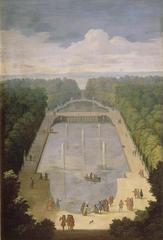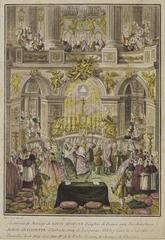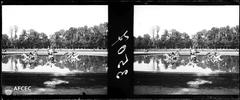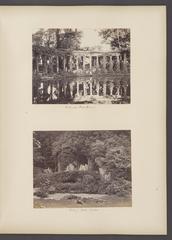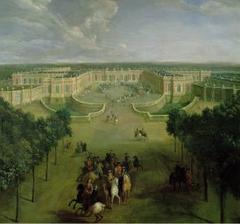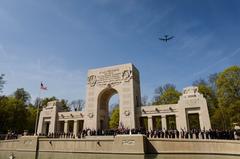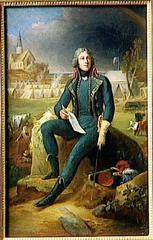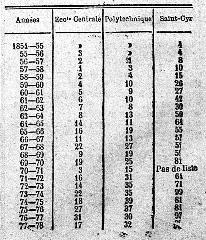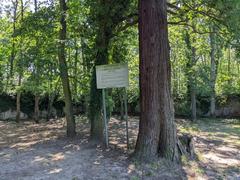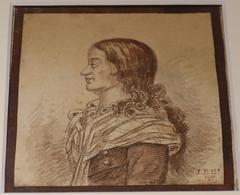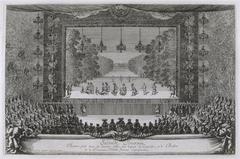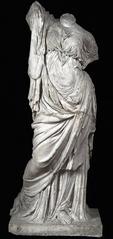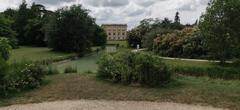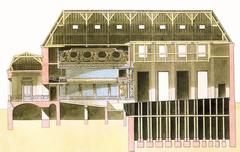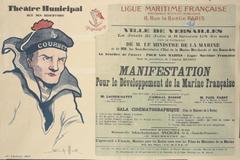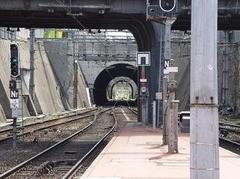La Lanterne Versailles: Visiting Hours, Tickets, and Historical Site Guide
Date: 03/07/2025
Introduction: The Significance of La Lanterne at Versailles
La Lanterne—officially the Pavillon de la Lanterne—is one of the most exclusive and historically rich estates within the legendary Versailles domain. Originally constructed in the 18th century as a royal hunting lodge, it has transitioned over centuries from a symbol of aristocratic leisure to a discreet presidential residence. Though closed to the general public, La Lanterne’s layered past, elegant architecture, and ongoing role in French governance make it a subject of deep fascination for history enthusiasts and visitors to Versailles alike. This comprehensive guide explores La Lanterne’s origins, architectural evolution, political and cultural significance, and provides practical advice for those hoping to catch a rare glimpse of this hidden gem during special public openings.
Table of Contents
- Introduction: The Significance of La Lanterne at Versailles
- Origins and Early History
- Architectural Evolution and Features
- Notable Residents and the Site’s Modern Role
- Visitor Information: Access, Tickets, and Hours
- Practical Tips and Travel Advice
- Accessibility and Getting There
- Nearby Attractions and Amenities
- Security and Visiting Conditions
- Political and Cultural Significance
- Frequently Asked Questions (FAQ)
- Summary Table: Key Practical Information
- Conclusion and Call to Action
- References
Origins and Early History
La Lanterne was constructed in the mid-1700s by Philippe Louis Marc Antoine de Noailles, then-governor of Versailles, as a royal hunting lodge—one of several pavilions built during the expansion of the Versailles estate. It was a gift from King Louis XV to the Noailles family, strategically positioned near the former Ménagerie, the royal menagerie built for Marie Adélaïde of Savoy. Remarkably, La Lanterne is the sole surviving structure from this original complex, exemplifying its architectural resilience and historical importance.
Architectural Evolution and Features
Exterior and Layout
The estate spans roughly four hectares, enclosed by tall walls and bordered with poplar trees for privacy and security. A tree-lined drive leads to a gravel courtyard, surrounded by formal landscaping. The main building is a two-story, U-shaped structure with a central block (approximately 20 by 6 meters) flanked by two lower wings. Designed in the neoclassical style, its symmetrical façade boasts six windows and a central doorway topped with a classical pediment.
A hallmark of the building is its abundance of French doors—reportedly 35—which flood the interiors with light and inspired its evocative name, “La Lanterne.” The entry grille is adorned with 36 herms, including two with deer heads, paying tribute to the estate’s origin as a hunting lodge.
Restoration and Modernization
Throughout its history, La Lanterne has been carefully restored to preserve its 18th-century character. Key restoration efforts occurred in the 1940s and 1990s. Modern amenities, including a swimming pool and tennis court, were added in the late 20th century, blending historical elegance with contemporary comfort.
Notable Residents and the Site’s Modern Role
Initially enjoyed by the Noailles family and their royal patrons, La Lanterne’s status evolved in the 20th century. In 1959, President Charles de Gaulle designated it as a retreat for the French Prime Minister. It became a presidential residence in 2007 under Nicolas Sarkozy, valued for its security, privacy, and tranquil ambiance. It continues to serve as a secluded venue for confidential meetings and personal reflection for French presidents and dignitaries.
(Evendo)
Visitor Information: Access, Tickets, and Hours
Is La Lanterne Open to the Public?
No, La Lanterne is a private government residence and is not open for regular visits. There are no daily visiting hours or standard tickets. Access is strictly limited to official guests and staff.
Exception: Special Public Openings
Rare Access: On special occasions such as the European Heritage Days (Journées Européennes du Patrimoine) in September, La Lanterne may open to the public for pre-booked, guided tours. Announcements are made in advance on official platforms. Tickets are limited and in high demand.
(Versailles Grand Parc; Château de Versailles)
Practical Tips and Travel Advice
- Advance Booking: Secure tickets as soon as public openings are announced via Versailles Grand Parc or Château de Versailles.
- Identification: Bring government-issued photo ID for security checks.
- Dress Respectfully: As an official residence, visitors are encouraged to dress appropriately.
- Photography: Usually restricted indoors—confirm on the day.
- Tour Language: Most tours are in French, with occasional English options.
- Children: Tours may not be suitable for young children; check age restrictions.
(Château de Versailles Visitor Information)
Accessibility and Getting There
- By Train: The closest stations are Versailles Château Rive Gauche (RER C), Versailles Rive Droite, and Versailles Chantiers. Taxis or a 20–30 minute walk are required from the station.
- By Car: Limited parking near the Versailles park entrance; special event parking may be more restricted.
- By Bus: Local buses serve the area, but direct access is restricted.
- Accessibility: The historic nature of the pavilion means access for visitors with reduced mobility is limited—contact organizers in advance.
(Versailles Tickets Tours; Tourist Places Guide)
Nearby Attractions and Amenities
While La Lanterne itself is rarely accessible, visitors can explore:
- Palace of Versailles: Opulent royal interiors and the Hall of Mirrors.
- Grand and Petit Trianon: Former royal retreats.
- Queen’s Hamlet and Versailles Gardens: Picturesque landscapes and fountains.
- Town of Versailles: Restaurants, cafés, and shops are within walking distance of the palace.
Amenities such as restrooms, cafés, and gift shops are located in the main palace complex or town—not at La Lanterne.
(Versailles Chateau; Château de Versailles Visitor Information)
Security and Visiting Conditions
- Security Checks: Expect thorough security procedures and ID verification.
- Small Group Sizes: Tours limited to 15–20 people to protect the site and ensure safety.
- Arrive Early: Arrive 15–30 minutes before your scheduled tour.
- Photography and Conduct: Respect restrictions and the official status of the residence.
Political and Cultural Significance
La Lanterne is more than an architectural gem—it is woven into the fabric of French political life. Its transformation from royal hunting lodge to presidential retreat mirrors the evolution of the French state. Used for confidential diplomatic meetings and as a symbol of leadership, it embodies the continuity and adaptability of French governance. Its connection to the Palace of Versailles situates it within a continuum of French history, symbolizing both the opulence of monarchy and the discretion of republican leadership.
(Evendo; VersaillesChateau.com)
Frequently Asked Questions (FAQ)
Can I visit La Lanterne?
No, except during rare special events such as the European Heritage Days.
How do I get tickets?
Online booking via official tourism websites is required for special openings.
Is La Lanterne accessible for people with disabilities?
Accessibility is limited; contact organizers before booking.
Can I take photographs?
Usually not permitted indoors; check with your guide.
Are tours available in English?
Most are in French, with English options depending on demand.
What other Versailles sites should I visit?
The Palace, the Trianons, Queen’s Hamlet, and the extensive gardens.
Summary Table: Key Practical Information
| Aspect | Details |
|---|---|
| Access | Restricted; only via pre-booked guided tours or special events |
| Booking | Online, in advance, via official tourism or event websites |
| Security | ID required; security checks; small group sizes |
| Duration | 45–90 minutes (typical tour) |
| Language | French (some tours may offer English) |
| Amenities | None on-site; use facilities in Versailles town or main Palace complex |
| Transport | Train (Versailles Château Rive Gauche, Rive Droite, Chantiers), car, or taxi |
| Accessibility | Limited; inquire in advance |
| Photography | Usually restricted indoors |
| Best Time to Visit | During European Heritage Days (September) or announced special events |
| Contact | Versailles Grand Parc |
Conclusion and Call to Action
La Lanterne stands as a compelling testament to France’s history—an 18th-century hunting lodge transformed into a seat of modern leadership. Though it remains largely inaccessible, its story and presence enrich any visit to Versailles. For those eager to experience its quiet grandeur, careful planning, advance ticketing, and monitoring official announcements for special openings are essential. Explore the greater Versailles estate, utilize virtual resources, and consider downloading the Audiala app for guided tours, updates, and insider content. Keep following official tourism platforms and our related posts for the latest opportunities to discover this remarkable site.
Immerse yourself in the grandeur and subtlety of Versailles, and let La Lanterne deepen your appreciation of French heritage.
References
- La Lanterne, Versailles: History, Visitor Information, and Nearby Attractions, 2025 (Wikipedia)
- La Lanterne Versailles: History, Architecture & Visitor Information, 2025 (Paris Zigzag)
- Visiting La Lanterne: Hours, Tickets, and Historical Significance at Versailles, 2025 (Evendo)
- La Lanterne Visiting Hours, Tickets & Guide to Versailles’ Hidden Historical Site, 2025 (Versailles Grand Parc)
- Palace of Versailles Official Website, 2025 (Château de Versailles Visitor Information)
- Versailles Chateau: Versailles Palace Architecture, 2025 (Versailles Chateau)
- The Collector: Why the Palace of Versailles Should Be on Your Bucket List, 2025 (The Collector)
- Versailles Tickets Tours, 2025 (Versailles Tickets Tours)
- Tourist Places Guide, 2025 (Tourist Places Guide)
- Paris Match, 2025 (Paris Match)
- Élysée: French Presidency – La Lanterne, 2025 (Élysée)
